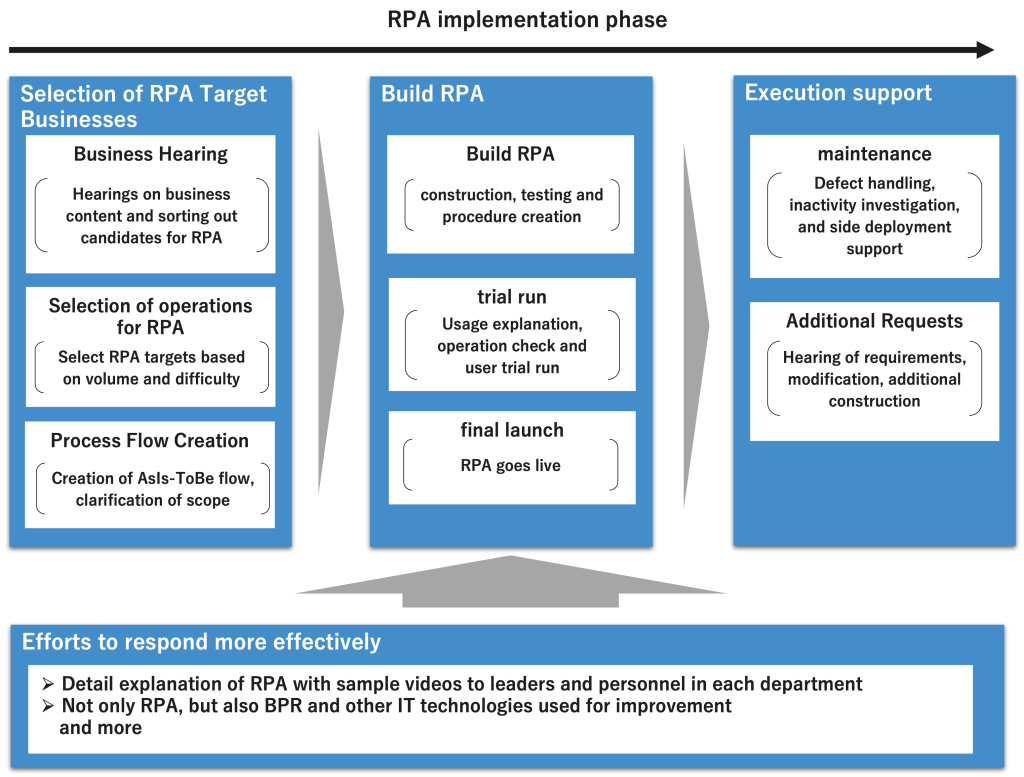background
With the law related to work style reforms coming into effect, there is an urgent need for so-called “work style reforms” in order to reduce working hours.
The Labor Standards Law to promote reforms in the way people work came into effect sequentially in April 2019 (*1). These reforms are intended to enable workers to choose for themselves diverse and flexible work styles that suit their circumstances, in response to the declining birthrate, aging population and diversifying needs related to work.
The Working Hours Reform Law includes a reform of working hours regulations to protect workers’ health by preventing them from working too hard and to achieve a diverse work-life balance. Therefore, companies are urgently required to reform their work styles in order to reduce working hours.
issue
In order to reduce the workload of each employee for the promotion of work style reform, it became necessary to promote robotic process automation (RPA), in which all divisions and departments became one.
In response to the reform of work styles, a major advertising agency implemented various measures, such as leaving the office completely at 10:00 p.m. However, because these measures did not reduce the workload itself, a gap appeared between the measures and the workload onsite, which did not decrease. Therefore, in order to promote work style reform, it became essential to reduce each employee’s workload in the first place.
Therefore, the company decided to automate the work using RPA to reduce the workload of each employee. However, the implementation of RPA requires the understanding of employees. If RPA is implemented without sufficient understanding, it will cause confusion and friction with the work site.
Therefore, it was necessary to select operations to be automated, build RPA and promote RPA across all divisions and departments, including those of group companies.
activity
As part of the RPA implementation support, we supported the selection of RPA target operations, the construction of RPA and its implementation.
In this project, following measures were taken to support the implementation of RPA to a major advertising agency.
- 1.Selection of operations to be converted to RPA through interviews and analysis of operations.
- 2.Construction of RPA and documentation based on the new work
- 3.Support execution, including education and additional request.
Implementation of RPA requires concerted efforts with users. Thus, detailed explanations of RPA were provided to the leaders and staff using sample videos to facilitate their understanding. In addition, improvements were implemented using not only RPA but also BPR and other IT technologies to solve business issues that were found during interviews.

consequence
With the cooperation of all employees, automation with RTA has achieved a change in work style and created an environment in which employees can focus on thinking
By providing support for the introduction of RPA, this project achieved successful completion and automation. In addition, as a result of establishing a stable support system, the workload of each employee was reduced, which contributed to the creation of a work-life balance. In addition, by not only implementing RPA but also building a cooperative system for all employees, including those at group companies, the amount of workload reduction through RPA was achieved more effectively. As a result, the company was able to create an environment in which employees can focus on thinking.


